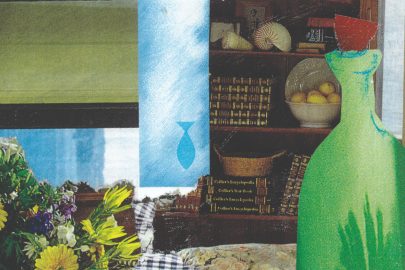Sep 17, 2023 Drinks
Some days I feel like the pandemic was worth it just for the video of Stanley Tucci making a Negroni in his gorgeous home. It was an Insta sensation. I’ll be honest, for me it was less about the Negroni and more about Stanley. Tanned, toned, geek-chic glasses, narrating in dulcet tones while he pours, piano music playing in the background, wry smile as he shakes it over ice, and then gently but firmly refusing to hand it over to his wife when it’s done. Living his best life. The Negroni life.
The Negroni is a challenging cocktail. A writer for Bon Appétit magazine once described it as “a secret handshake, a sign to bartenders that you knew what you liked, and how to order it”. A cocktail for serious cocktail drinkers. Why? Because we’re used to cocktails being peppy, sweet, fruity, brightly coloured and exotically garnished. The Negroni is a little of many of those things, but with a very straight face. It separates the men from the boys. It may be orange, but it’s a deep, dark, sometimes blood-tinged orange. Sweet, but oh so bitter.
There are only three ingredients in a Negroni: Campari, gin and sweet (red) vermouth. It’s a bartender’s dream — quick to build, few ingredients, no fancy glassware, and foolproof (as long as you subscribe to the theory that any fool can measure a shot, three times in quick succession). Our man Stanley, who is no fool, made his with a double shot of gin to one of vermouth and one of Campari. Each to their own. The Negroni can also be mixed and bottled in advance, leaving little to do except chill over ice before serving.
Campari. Too bitter? Too bad. That is the very point of a Negroni. It makes you hungry, like a good aperitivo should. There are plenty of other delicious bitter-ish Italian orange liqueurs out there. Some cheaper. Some less punchy. But none have the same bitter depth, subtlety and (God help me, I’m going to say it) mouthfeel — a viscosity that gives the cocktail a pleasing heft. I might make an exception for L’Opera, from Hawke’s Bay, which is the pick of quite a few joints in Auckland.
To my mind, the secret to a good Negroni is in the vermouth. The Bar Non Solo version is balanced and light, underpinned by the smooth vanilla notes of Carpano Antica Formula 1786, which claims to be one of the first vermouths ever made. An eminently drinkable and less challenging Negroni. The versions at Pici , Bossi and Cafe 39 opt for Cocchi di Torino, with deeper flavours from cacao, wormwood and dried rhubarb. Panacea and Caretaker blend vermouths.
Sweet or red vermouth is basically wine which has been fortified (doped up with grape spirit) and infused with herbs and roots. They range from the medicinally bitter, almost cola-coloured, through to sweeter, lighter and brighter versions. In a Negroni, it is the harmony of three bitter and herbaceous ingredients that matters. Too much bitter on bitter is counterproductive. Bittersweet is the goal. If you like more-intense versions, the Negroni at Pici and Ooh-Fa could put hairs on your chest. Personally, I find the combination of Victor gin and Cocchi di Torino a bit heavy-handed. To be sipped slowly, between mouthfuls of focaccia and gabagool (life is hard, I know). Apéro combines Victor with lighter Cocchi Rosa, which is beautiful. Bossi also has a smooth, elegant version with Tanqueray and Torino that I think strikes the balance and the antipasti perfectly.
I have a near-perfect memory, a few years ago, of standing in a 40°C kitchen at the height of summer, manning a pasta boiler and a six-burner gas stove, when someone handed me a sbagliato, a Negroni where the gin has been subbed out for prosecco. And oh my. What a revelation. It was refreshing, less intense, effervescent. A Negroni with training wheels, if you will. The story goes that a bartender building a Negroni one day accidentally reached for the prosecco instead of the gin, and the sbagliato was born — sbagliato means ‘mistaken’ or ‘broken’. If you put aside the absurdity of the idea that a bartender could ever mistake a prosecco bottle for a gin bottle, it is a nice story. Try the Baby Americano at Panacea — Campari, vermouth and soda, dressed with a chunky green olive. Bubbly and playful, it’s like a sbagliato and an Aperol spritz had a little Venetian baby.
Some cocktail bars are also putting their own spin on things, including in takeaway bottles. Clipper offers a Negroni laced with rhubarb syrup, while Caretaker makes a Ritz Negroni with the addition (albeit almost imperceptible) of absinthe. But I’m a purist. If I had to choose my favourite Auckland version, my money is on the Negroni at Cafe 39 in Ponsonby — Campari, divinely citrusy Larios 12 gin, Torino and a proper whiff of fresh orange oil from a twist of peel. Absolutely killer late-night stool-perching stuff.






